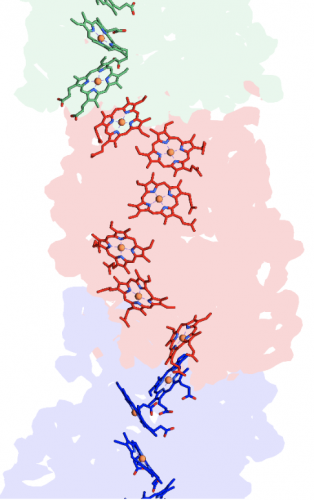Picture this: Mother Nature, safety glasses on, soldering iron in hand. If Mother Nature held any occupation, few would suggest that she would be an electrical engineer. Yet, the mere existence of Geobacter suggests that we should reconsider.Geobacter are common soil bacteria that can live without oxygen like many other bacteria; however, they possess a unique ability to transport electrons outside their cell and generate electricity. Discovered in 1987 in the Potomac River, these bacteria are known to clean toxic, radioactive waste and regulate many global environmental phenomena. Because they live in environments without access to oxygen, Geobacter need to generate energy by other means, so they transfer electrons to iron oxide and conduct respiration along the way.
The question then becomes: how do they releasethe electrons? Geobacter can grow on top of each other and stack to hundreds of micrometers. In order to transport electrons between themselves, they create protein filaments known as nanowires. However, the researchers did not understand how these filaments could be conducting electrons since proteins are typically nonconducting.
While biologists had been confronting this issue through gene mutations and amino acid changes, Yale physicists Nikhil Malvankar and Sibel Ebru Yalcin had been measuring the physical aspects of electron transport in Geobacter. A graduate student in the Malvankar lab, Yangqi Gu examined the structure of Geobacter nanowires using cryogenic electron microscopy (cryo-EM). Unlike other methods, cryo-EM offers the opportunity to construct structures of proteins that are quite large and not easily purified. After taking pictures of the molecules and using mathematical formulas to stitch the images together, Malvankar and his collaborators—Edward Egelman from University of Virginia and Allon Hochbaum from UC Irvine—came across an unexpected result. In the middle of the filaments was an electron dense region—suggesting the presence of a metal. After some more research, the scientists realized that the metal was iron and the molecules that formed the core of nanowires were iron-containing proteins called hemes surrounded by insulator proteins. “Somehow nature has figured out how to make wires long before us,” Malvankar said.
The implications of the discovery are innumerable and touch on practically every scientific field. For example, Geobacter play crucial roles in the maintenance of our environment: understanding how they function will help us promote their growth to stabilize methane levels in the ocean and atmosphere. Within the field of medicine, this finding suggests possibilities for how infectious bacteria could grow in anaerobic conditions and at different rates. Additionally, new potential antibacterial drugs can target and disrupt the heme structures of nanowires. The most tangible manifestation of this study comes in the form of technology and building new biomaterials: these bacteria provide a more sustainable alternative to traditional nanomaterials, which are energetically and economically expensive.
Malvankar thinks there is much possibility in pursuing the multifaceted functions of these nanowires. “It’s one of the areas of research that is truly interdisciplinary. A person from one background cannot solve this problem. You need physicists, microbiologists, chemists, geneticists,” Malvankar said. His plans include continuing to study the proteins at hand and applying that information to other bacteria. In addition, he is working with chemists Victor Batista, Gary Brudvig, and Charles Schmuttenmaer to construct a new theoretical framework surrounding the ability of proteins to act as conductors. Needless to say, the discovery of the nanowire composition in Geobacter holds more potential for the future than we can even realize now. Although wiring solar cells to bacteria and making living sensors seems impractical, this finding opens doors unimaginable to us in the past. “We think this is just the beginning,” Malvankar concluded.

